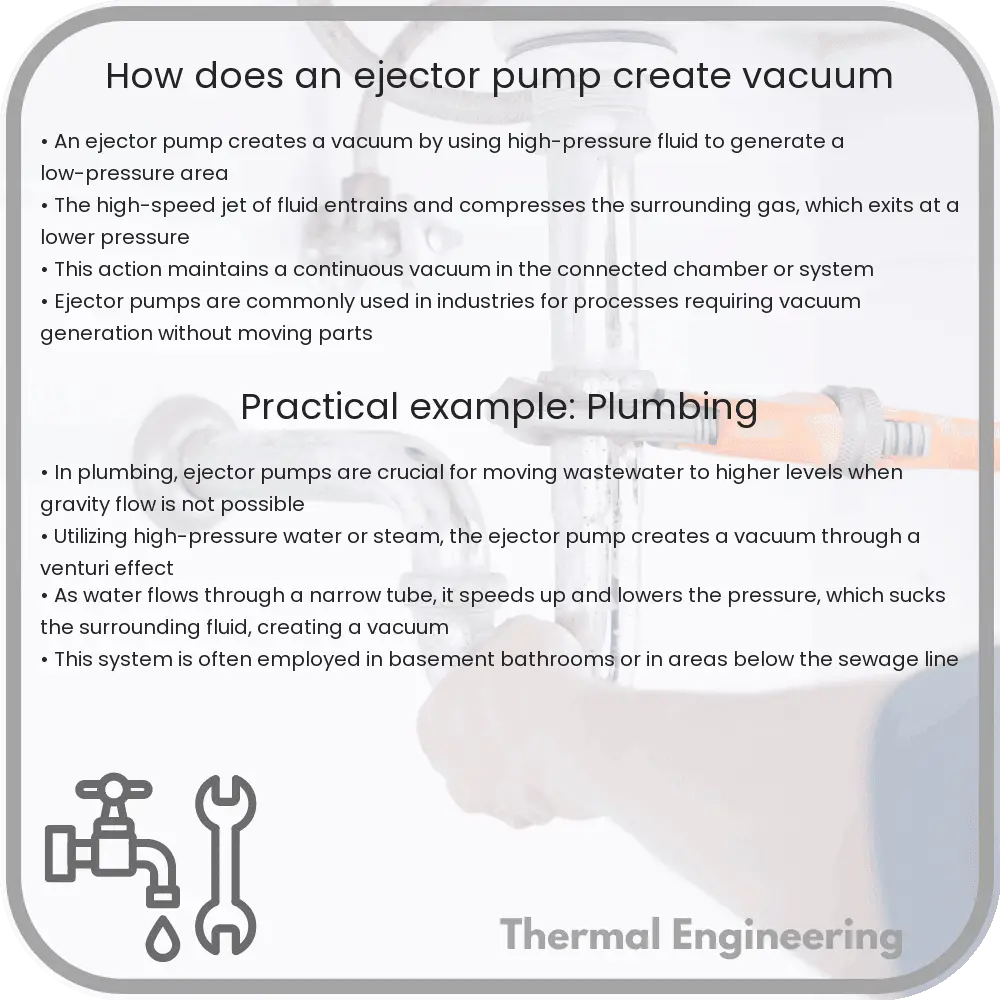Learn how ejector pumps use the Venturi effect to create vacuums in various industrial applications, explained through fundamental physics principles.

Understanding How an Ejector Pump Creates a Vacuum
Ejector pumps, also known as jet pumps or eductors, are devices that produce a vacuum (low pressure) using the Venturi effect, a principle of fluid dynamics. This type of pump is widely used in various industrial applications, including chemical processing, steam power plants, and aircraft systems, primarily because it has no moving parts and is relatively easy to maintain.
The Working Principle of an Ejector Pump
The fundamental operating principle of an ejector pump is based on the conversion of pressure energy to kinetic energy. It involves three main stages: the motive stage, suction stage, and diffuser stage.
- Motive Stage: High-pressure motive fluid (often steam, air, or water) is passed through a nozzle to convert pressure energy into kinetic energy. The rapid expansion of the motive fluid reduces its pressure and increases its velocity as it exits the nozzle.
- Suction Stage: The high-speed jet that exits the motive nozzle entrains and mixes with the fluid (or gas) at the suction inlet, which is the source of the material to be evacuated. The mixing of the two streams occurs in the mixing chamber.
- Diffuser Stage: The mixed fluid then enters a diffuser where the kinetic energy is converted back into pressure energy. This conversion process significantly reduces the velocity of the fluid mixture while increasing its pressure, though not to the original level of the motive fluid. As the pressure in the suction chamber is lower than atmospheric pressure, a partial vacuum is created.
Mathematical Description of the Ejector Pump Operation
The performance of an ejector pump can be analyzed using the Bernoulli’s principle and the conservation of mass. According to Bernoulli’s equation:
P1 + 0.5 * ρ * V12 = P2 + 0.5 * ρ * V22
where P is the pressure, ρ (rho) is the density of the fluid, and V is the velocity of the fluid at stages 1 and 2 respectively.
Moreover, the continuity equation (conservation of mass) states that the mass flow rate must be constant throughout the ejector, therefore:
ρ1 * A1 * V1 = ρ2 * A2 * V2
where A is the cross-sectional area of the flow at stages 1 and 2.
Applications of Ejector Pumps
Ejector pumps are commonly used in settings where it is necessary to create a vacuum or move high volumes of fluid cheaply and efficiently. Some specific applications include:
- Vacuum packaging machines in the food industry.
- Evacuation of process gases in chemical plants.
- Aircraft fuel systems to help transfer fuel between tanks.
- Steam jet ejectors in steam power plants for condenser air extraction.
In conclusion, ejector pumps offer a robust and simple solution for creating vacuums and moving fluids or gases without moving parts. Their operation, based on foundational physics principles such as the Bernoulli’s equation and the conservation of mass, demonstrates the practical application of fluid dynamics in engineering systems.